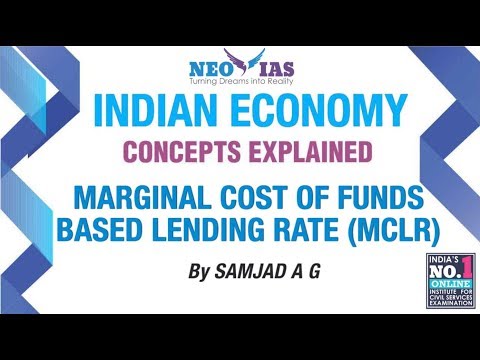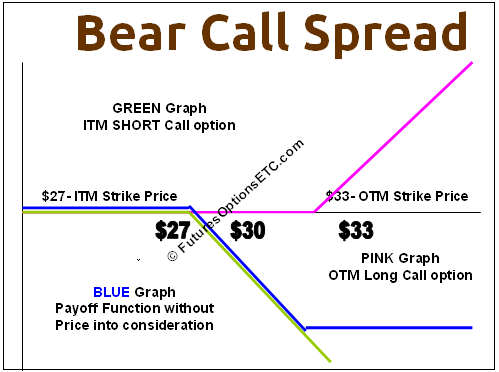день Это Не же Отдых После тяжелый Дня, Но же Интересный Контент а Группе Игровые Автоматы “клуб Слотов”
March 24, 2023What To Wear To A Casino: Master The Fine Art Of Dress Requirements & Impres
March 24, 2023Contents:


Returns can be for any time period, but it is always better to take a long-term period. If, for instance, the ten-yr Treasury bond yields 2%, buyers would contemplate 2% to be the chance-free rate of return. Treasury bonds are probably the most usually cited proxy for the chance-free price because they’re backed by the complete religion and credit score of the U.S. authorities. Portfolio managers can use it to alter the risk-adjusted returns history. To do so, they have to increase the measurement interval or choose the best suited interval.
Conversely, funds with lower standard deviations can sport a higher Sharpe ratio if they have consistently decent returns. Key criteria one should apply while choosing a mutual fund to invest inPicking the right mutual fund may look easy, but it cannot be done without following certain basic criteria. Before investing in any fund, you must first identify your goals for the investment. If the ratio is high or positive, the return outperforms the benchmark.
By definition, the negative sharpe ratio benchmark index of Sensex and Nifty has a beta of 1.0. Jack L Treynor, an American economist and one of the Capital Asset Pricing Model inventors, developed the Treynor Ratio. This ratio estimates the return earned on an investment over the expected earnings in case there was no diversifiable risk in the investment.
If the addition of the new investment lowered the Sharpe ratio, it should not be added to the portfolio. This example assumes that the Sharpe ratio based on past performance can be fairly compared to expected future performance. The Sharpe ratio is often used to compare the change in overall risk-return characteristics when a new asset or asset class is added to a portfolio. The current risk-free rate is 3.5%, and the volatility of the portfolio’s returns was 12%, which makes the Sharpe ratio of 95.8%, or (15% – 3.5%) divided by 12%. The risk-adjusted nature of the Calmar ratio makes it stand out as one of many possible investment performance measures.
Implications of Regime-Shifting Stock and Bond Correlations – Wealth Management
Implications of Regime-Shifting Stock and Bond Correlations.
Posted: Tue, 25 Apr 2023 07:00:00 GMT [source]
You can use the ratio to assess how an asset or fund is performing against similar assets or funds. This would help you understand whether the asset is giving you better returns than its competitors. For instance, if the Sharpe ratio of two blue-chip funds, A and B, is 1.5 and 1.75, respectively, fund B is better than fund A since it gives a higher return for the same level of risk.
What is Standard Deviation?
The Sharpe Ratio is based on historical data and may not reflect the future performance or risk of the fund. Remember, you should always look at the Sharpe ratio along with the Standard Deviation. This will help you understand the volatility with which the fund has delivered returns. But if the funds deliver the same return, then the Sharpe ratio of the fund with a lower standard deviation will be higher. The ratio is the common return earned in extra of the chance-free fee per unit of volatility or complete threat.
This measurement is very useful to compare funds with similar returns or high returns, by analyzing the same in line with the risk taken. A negative ratio implies that the portfolio’s returns may turn out to be negative or that the risk-free rate is greater than the predicted returns of the portfolio. In this example, our excess return is 5% (Portfolio return – Risk-free return) and risk/SD is 8% which gives us a sharpe ratio of 62.5%. However, when considering the risk factor and computing the Sharpe ratio, Fund B has a higher value. This means Fund B is able to generate higher returns on a risk-adjusted basis.
- Sharpeand is used to help investors understand the return of an investment compared to its risk.
- If thought of in isolation, it doesn’t present a lot information about the fund’s efficiency.
- You may also compare funds that offer the same returns but are at different risk thresholds.
- If the given value of alpha is positive 2.0, then it means that XYZ has outperformed its benchmark index by 2% and given 22% as returns for that specific year.
The Sharpe Ratio assists in identifying which fund has produced higher returns for a given level of risk or which fund has taken the lower risk for a given level of return. The Sharpe Ratio measures the amount of additional return generated per unit of risk in a portfolio or fund. Excess return is calculated by subtracting the risk-free asset’s return, such as a bank fixed deposit or government bond, from the fund’s or portfolio’s return. Risk is assessed using the standard deviation of the excess return, which captures the fluctuations or variability in returns.
File ITR, invest & save upto ₹46,800 in taxes on the go
The Sharpe ratio for supervisor A would be 1.25, while supervisor B’s ratio could be 1.four, which is healthier than that of manager A. Risk and reward must be properly considered when making investment choices. The purpose of this ratio is to help find out whether investors are being rewarded for taking a risk.
However, a adverse Sharpe ratio can be brought nearer to zero by both rising returns or increasing volatility . Thus, for adverse returns, the Sharpe ratio isn’t a particularly useful tool of study. In a common definition of risk, the standard deviation or variance takes rewards away from the investor. But the larger problem for the Sharpe ratio is that it treats all volatility the same.
Also, you should look at the fund’s standard deviation when comparing the Sharpe ratio. Sharpe ratio helps in getting the best evaluation of the funds and enhancing the returns on investment. Over the previous 25 years, the typical annual Sharpe ratio for the S&P 500 has been 1.zero with frequent intervals of much higher and lower ranges. Over the past 12 months, the S&P 500 is up 23.6% with a normal deviation of four.2%.
Sharpe Ratio
Beginners have the opportunity and can compare the Sharpe Ratios of various mutual funds to analyze their risk factors and adjusted-return rates. Higher Sharpe Ratio means greater returns from an investment at a higher level. Thus, investors aiming to accumulate higher returns will invest in funds that come with higher risk factors. The standard deviation of a fund measures this risk by measuring the degree to which the fund fluctuates in relation to its average return of a fund over a period of time.
I am a finance enthusiast who loves exploring the world of money through my lens. I’ve been dedicated to building systems that work and curating content that helps people learn. Let’s understand the Sharpe ratio calculation with the help of an example.
ClearTax offers taxation & financial solutions to individuals, businesses, organizations & chartered accountants in India. ClearTax serves 1.5+ Million happy customers, 20000+ CAs & tax experts & 10000+ businesses across India.
Mutual Funds to meet Financial Planning Goals
In the context of Indian mutual funds, empirical evidence supports the notion that skilled fund managers can deliver excess returns, as evidenced by positive Jensen’s Alphas. The ratio is the common return earned in extra of the risk-free fee per unit of volatility or total danger. Volatility is a measure of the worth fluctuations of an asset or portfolio. The danger-free price is three% and normal deviation of the asset’s extra return is 9%.

After the addition, the portfolio return becomes 25 per cent and standard deviation remains at 10 per cent. If the risk-free rate is taken as 5 per cent, the new Sharpe ratio will be 2 [(25%-5%)/10%]. Risk-adjusted financial performance of investment portfolios or mutual funds is typically measured by Sharpe’s ratio. From an investor’s point of view, the ratio describes how well the return of an investment compensates the investor for the risk he takes.
On the other hand, a negative ratio means that the asset is returning below the benchmark returns. Sharpe ratio tells us how well we are being rewarded for the amount of risk we are taking. Sannihitha Ponaka is an MBA graduate from Symbiosis and has more than 5 years of experience in the financial sector. Following her dreams in the field of finance, she leverages writing to communicate the importance of investing. Your go-to guide to creating amazing and easily understood investment content. Her forte lies in investment advisory and strategy with expertise in fundamental analysis and research.
Ideally, you might consider a fund desirable which has a higher Sharpe ratio. However, this kind of perception may not always be fruitful if the fund took a lot of additional volatility. It means that a fund that achieves 7% returns with moderate volatility will always be better than a fund which gives 8% returns with a lot of ups and downs. A higher Sharpe ratio, thus, means that the relationship between fund’s risk and return is ideal. Sharpe ratio can tell you whether your preferred fund is suitable from an investment perspective as compared to peer funds in the said category.
The fund’s Sharpe ratio will be very high, but simultaneously it will be a risky proposition for an investor looking for moderately risk investment. Hence, it would help if you did not blindly rely on Sharpe ratio for shortlisting a fund. You may use other qualitative measures along with this ratio for informed decision making.
As it is entirely quantitative, it provides objective feedback into the fund’s performance. By looking at the Sharpe ratio, you can assess the degree of risk that two funds faced earning extra returns over the risk-free rate. It is a standardised tool to compare funds which use different strategies like growth or value or blend.
Beta is a measure used in fundamental analysis to determine the volatility of an asset or portfolio in relation to the general market. Sharpe ratio measures the portfolio risk-adjusted returns in comparison to the risk-free rate. In other words, it tells about how much excess return has been generated for each unit of risk. In comparison to the extra risks taken on in the portfolio, investors can determine the excess return created by each investment by looking at this ratio. This calculator can be used to evaluate growth style, valuation style, or a combination of all funds.
If the given value of alpha is positive 2.0, then it means that XYZ has outperformed its benchmark index by 2% and given 22% as returns for that specific year. Similarly, a negative alpha of 2.0 may mean that XYZ has underperformed compared to BSE Sensex and given 18% as returns for the specific year. It is quite similar to the Sharpe ratio, where higher values depict low risk about its returns. The only aspect that differentiates the Sortino Ratio from the Sharpe Ratio is that the downside risk is considered instead of the overall risk i.e. upside and downside. Since this ratio focuses on solely the negative deviation of the returns from its mean, investors believe it gives a better picture of the risk-adjusted performance of a portfolio.
Zolbetuximab/mFOLFOX6 Prolongs Survival in Locally Advanced … – Cancer Network
Zolbetuximab/mFOLFOX6 Prolongs Survival in Locally Advanced ….
Posted: Fri, 21 Apr 2023 07:00:00 GMT [source]
Our experts suggest the best funds and you can get high returns by investing directly or through SIP. Download Black by ClearTax App to file returns from your mobile phone. Save taxes with ClearTax by investing in tax saving mutual funds online. Divide the subtracted number, which is called the excess returns, by the standard deviation of the fund’s returns. Sharpe Ratio is also used to carry out the performance of a particular share against the risk. It can compare two different funds that possess the same risk or same returns to help an investor understand how well he will be compensated.
Just upload your form 16, claim your deductions and get your acknowledgment number online. You can efile income tax return on your income from salary, house property, capital gains, business & profession and income from other sources. Further you can also file TDS returns, generate Form-16, use our Tax Calculator software, claim HRA, check refund status and generate rent receipts for Income Tax Filing. However, there are certain precautions that you need to take while using the Sharpe ratio. Firstly, it is just a number and standalone it conveys lesser meaning. You need to compare the Sharpe ratio of two funds to derive its exact meaning.
Sharpeand is used to help investors understand the return of an investment compared to its risk. The ratio is the average return earned in excess of the risk-free rate per unit of volatility or total risk. If you are looking for a way to measure the risk and volatility of a mutual fund, you may have come across the term standard deviation of return. But what does it mean and how can you use it to make better investment decisions? In this blog post, I will explain what the standard deviation of return is, how it is calculated, and why it is important for mutual fund investors.
Portfolio Evaluation: What, Why and How? – Equitypandit – EquityPandit
Portfolio Evaluation: What, Why and How? – Equitypandit.
Posted: Thu, 27 Apr 2023 07:00:00 GMT [source]
This ratio distinguishes the harmful volatility from the total overall volatility. This is done by using the investment’s downside deviation rather than the portfolio returns total standard deviation. The ratio deducts the risk-free rate from the portfolio’s return, which is then divided by the downside deviation.
Related posts

